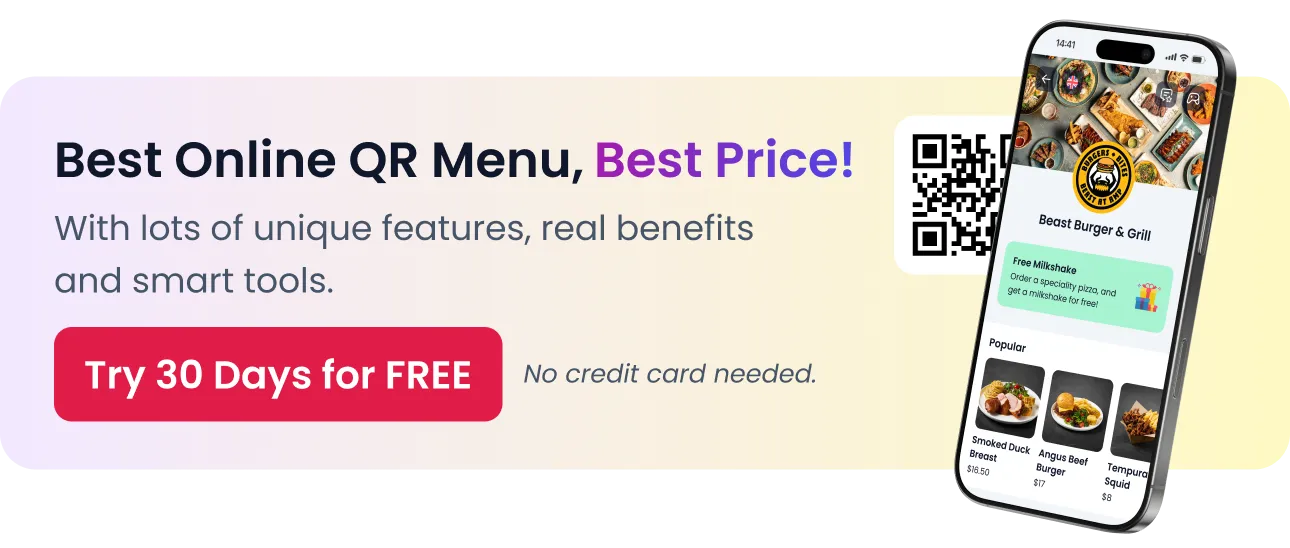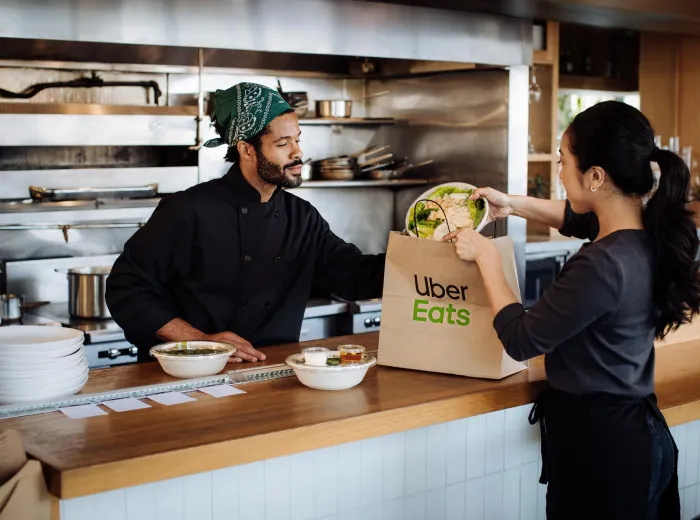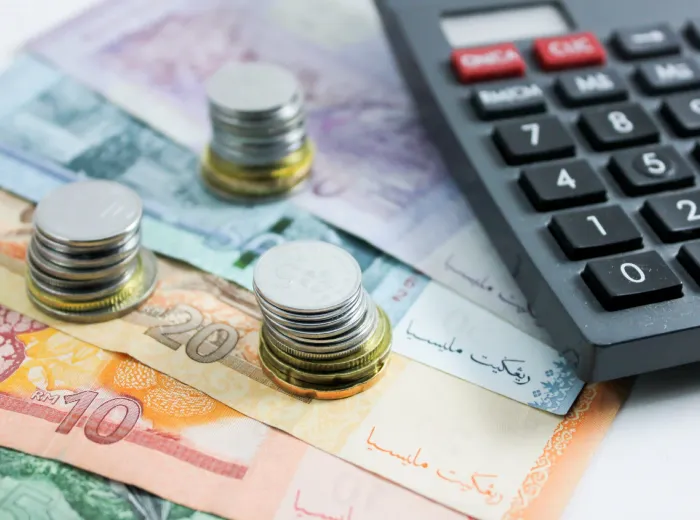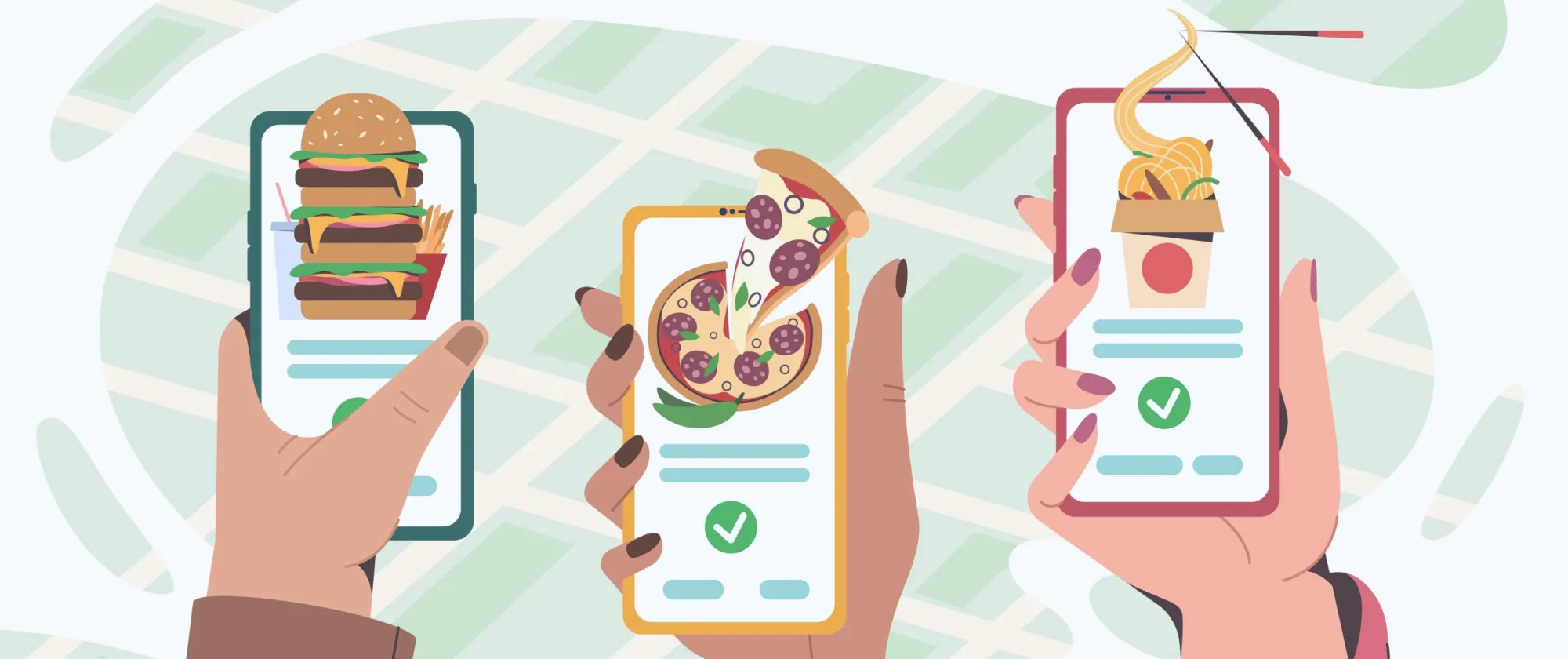
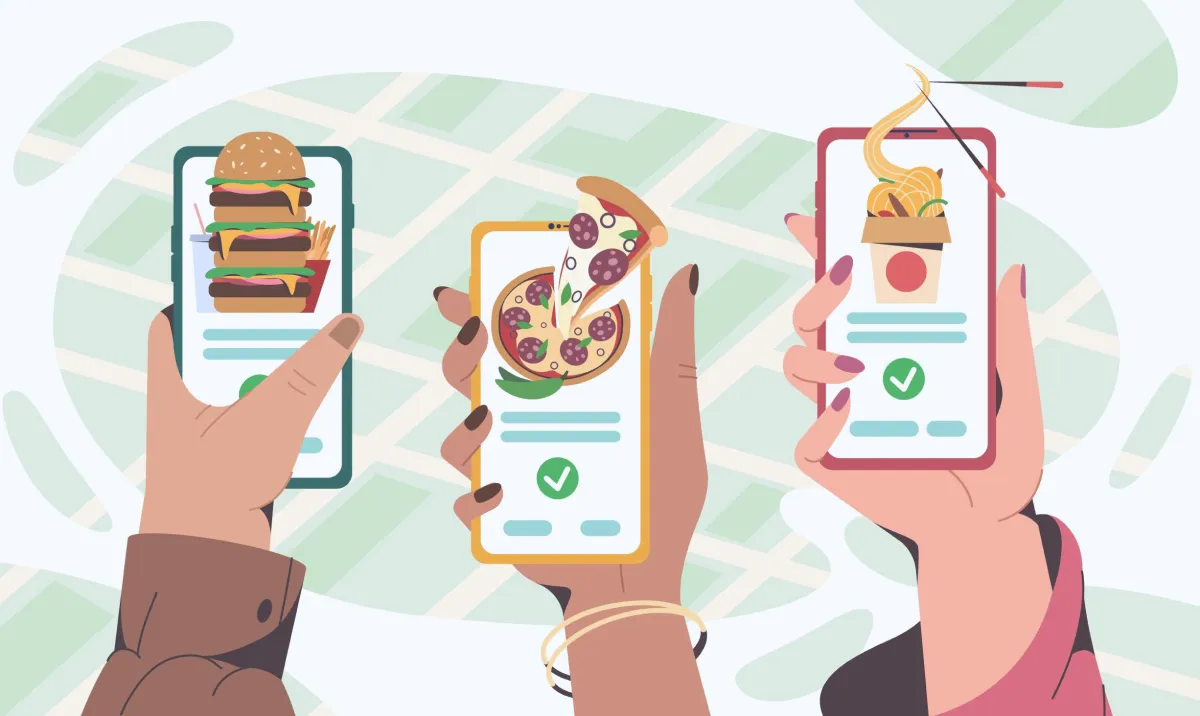
17 Ways to Improve Your Restaurant's Ranking on Food Delivery Platforms
In today’s delivery-driven dining world, your restaurant’s visibility on food delivery apps can make or break your bottom line. Whether you’re listed on Uber Eats, DoorDash, Grubhub, or a regional platform, where and how your restaurant appears matters more than ever. A high-ranking position doesn’t just increase exposure — it directly translates to more orders, higher revenue, and long-term brand loyalty.
But here’s the challenge: delivery platforms don’t always tell you exactly how to climb the ranks. Their algorithms consider everything from prep time and customer reviews to photos, pricing, and promotional strategies. It’s not enough to just sign up and upload your menu — you need to actively manage your profile, operations, and customer experience to rise above the competition.
This guide breaks down 17 proven, practical strategies that help boost your restaurant’s placement on food delivery apps — not with gimmicks, but with smart, real-world improvements you can implement today. Whether you’re a seasoned restaurateur or just starting to navigate the delivery space, these tips will help you get found, get chosen, and get ordered.
Understand How Delivery Platforms Rank Restaurants
Before you can improve your restaurant’s position on delivery platforms, you need to understand what determines your ranking in the first place. While each app has its own proprietary algorithm, most rely on a mix of performance metrics, customer behavior, and profile optimization. Knowing these ranking factors helps you target the right improvements — instead of guessing or wasting time on the wrong things.
The algorithms behind the apps
Food delivery platforms like Uber Eats, DoorDash, and Grubhub use ranking algorithms designed to surface restaurants that are:
- Fast and reliable
- Highly rated by customers
- Popular and frequently ordered from
- Visually appealing (with great menu photos)
- Running promotions or special offers
- Located close to the customer
Some of the key ranking signals include:
- Order completion rate – How often you accept and fulfill orders
- Prep time averages – How quickly your kitchen prepares food
- Customer ratings and reviews – Higher averages boost visibility
- Menu optimization – Keyword-rich item names and categories
- Photo coverage – Listings with images tend to rank higher
- Engagement rate – How often users view or order from your listing
These algorithms are constantly evolving, but most reward consistent performance, speed, and customer satisfaction — not just popularity or age on the platform.
Factors out of your control — and what to do about them
Not every ranking factor is something you can control directly. For instance:
- Location proximity: Most apps prioritize restaurants that are physically closer to the customer, especially during high-demand hours.
- Sponsored listings: Restaurants that pay for promotion or run sponsored ads may appear above you, even if your performance is better.
- User search behavior: Customers may search by cuisine type, keyword, or filter (e.g., “free delivery,” “4+ stars”), changing what they see.
But here’s the good news: even if you can’t change your physical location or buy ad space, you can:
- Choose accurate tags and cuisine categories (e.g., “Halal,” “Gluten-Free,” “Thai Street Food”)
- Stay open during high-demand hours, especially evenings and weekends
- Keep your menu updated with trending items or searchable keywords
- Encourage reviews to raise your average star rating
While you can’t control geography or algorithms, you can consistently influence the factors that help the algorithm notice you — and reward you.
Optimize Your Menu for Search and Sales
Your digital menu isn’t just a list of dishes — it’s one of the most powerful tools for improving your ranking and driving conversions on delivery platforms. A well-structured menu helps customers find what they’re craving, encourages higher-value orders, and sends positive signals to the platform’s algorithm.
Here’s how to fine-tune your menu so it performs better both in searches and at checkout.
Use high-intent keywords in item names and categories
Customers often search for specific dishes — not vague names. Delivery apps index your menu titles and descriptions, which means the right words can help you appear in more results.
Tips for keyword-optimized naming:
- Be descriptive and clear:
❌ “The Classic”
✅ “Classic Beef Cheeseburger with Fries” - Include cooking methods or ingredients:
✅ “Grilled Chicken Caesar Wrap”
✅ “Spicy Tofu Pad Thai” - Use popular search terms in your cuisine (e.g., “BBQ,” “Vegan,” “Gluten-Free”)
- Categorize correctly: Make sure items are grouped under accurate headings like “Salads,” “Burgers,” or “Family Meals”
When customers type “spicy chicken wings” or “vegetarian tacos,” you want your menu items to show up in those results — and that only happens with strong keyword alignment.
Trim down underperforming items
A cluttered or overly long menu can hurt both user experience and ranking. Apps tend to favor restaurants with:
- Clear, focused offerings
- Fast prep times
- Consistently ordered items
Review your item performance regularly and consider removing:
- Dishes with high cancellation or complaint rates
- Low-selling items that slow down your kitchen
- Items with missing photos or unclear descriptions
Bonus Tip: Use bundling to reduce complexity. For example, combine sides and mains into a “combo” meal instead of offering each separately.
Streamlining your menu not only helps you rank better — it also reduces decision fatigue for your customers and simplifies operations for your team.
Use clear, appealing item descriptions
Descriptions help seal the deal. They give customers confidence about what they’re ordering — and they help boost search visibility too.
Effective descriptions are:
- Short and vivid: Aim for 1–2 sentences
- Ingredient-forward: List key flavors and components
- Clear about options: Mention spice levels, sauces, toppings
Example:
“Crispy chicken tenders served with house-made honey mustard and seasoned fries. Choose mild or spicy.”
Avoid:
- Vague language (e.g., “Delicious and amazing!”)
- Overly long or technical wording
- Leaving the field blank — empty descriptions are a missed opportunity
The goal is to answer your customer’s mental questions before they ask — and get them excited to order.
Upload High-Quality Photos (It’s a Must)
When it comes to food delivery platforms, visuals drive decisions. Most customers won’t order a dish they can’t see — and the algorithms know it. That’s why high-quality, appetizing photos aren’t just nice to have — they’re essential for improving both your restaurant’s ranking and your order volume.
Restaurants with full photo coverage often see:
- Higher conversion rates (views turning into orders)
- More time spent browsing their menu
- Better customer satisfaction and lower refund requests
Here’s how to get your food photos working for you.
Invest in pro-level photography
Blurry, dark, or poorly framed photos can damage your brand — and hurt your visibility. Professional-looking images showcase your dishes in the best light (literally) and signal quality to both customers and the platform itself.
Pro tips for restaurant food photos:
- Use natural lighting — avoid harsh flashes or dim indoor shots
- Shoot at eye level or a slight angle to highlight texture and depth
- Use a clean background that doesn’t distract from the food
- Stick to consistent styling — same dishware, lighting, and framing for every photo
If you can’t hire a pro photographer, use a modern smartphone with a good camera and follow a few basic styling principles. Some platforms (like Uber Eats) also offer photography services — check their restaurant portals to see if it’s available.
Great photos are a long-term investment. They make your menu stand out and dramatically increase the likelihood of being chosen over competitors.
Add photos to every menu item
Delivery platforms reward menu completeness — and that includes photo coverage. Listings with images for most or all items tend to rank higher, especially when customers search by dish.
Prioritize these categories first:
- Top sellers — Showcase your most-ordered items first
- Signature dishes — What makes you unique? Show it off
- High-margin items — Help push profitable dishes visually
Best practices for photo coverage:
- Upload at least one photo per menu item
- Keep file sizes optimized — high quality, but not slow to load
- Avoid using the same photo for multiple items unless they’re identical
- Ensure your photos match what the customer will actually receive
When customers scroll through endless menus, eye-catching photos stop the scroll — and help seal the sale.
Improve Your Order Accuracy and Speed
In the world of food delivery, consistency is king. The platforms monitor how often you make mistakes, how fast your orders are ready, and how often drivers wait around — and they use that data to decide where you show up in rankings. Simply put, if you’re fast and accurate, the algorithm rewards you with more visibility.
Customers also notice. A single missed item or long wait can lead to bad reviews, refund requests, and fewer reorders.
Let’s break down how to tighten up both your speed and your accuracy.
Reduce missing items and order mistakes
Incorrect or incomplete orders are one of the biggest ranking killers — not to mention customer trust breakers. Fortunately, most mistakes are preventable with a few system tweaks.
Ways to improve accuracy:
- Use printed or digital checklists for each order
- Assign one team member to double-check bags before sealing
- Label all containers clearly, especially for special instructions
- Train staff on allergy and modification handling
If you use multiple apps, consider integrating your POS system with your delivery platforms. This reduces manual entry, which is a common source of mistakes.
The goal is to make 100% accuracy the expectation, not the exception. The more consistently you deliver the right order, the more the platforms will trust — and reward — your listing.
Keep prep and handoff times tight
Prep time and driver wait time are major metrics tracked by delivery apps. If your orders consistently take too long, your ranking will suffer — even if the food is great.
What platforms track:
- Average prep time vs. promised time
- How long drivers wait after arriving
- Number of delayed or late orders per week
How to improve your speed:
- Set realistic prep times — don’t overpromise
- Use batch prep techniques during busy periods
- Designate a “handoff zone” near the entrance for delivery drivers
- Stage common items in advance, like sauces or drinks
Some restaurants use kitchen display systems (KDS) to better track timing and order flow. If that’s out of reach, even a simple timer system or whiteboard can help keep things moving.
Fast, predictable prep times help you climb the rankings — and keep drivers happy too, which can improve delivery reliability overall.
Encourage Consistent, Honest Customer Reviews
Reviews are more than just reputation builders — they’re a direct ranking signal for delivery platforms. Apps like Uber Eats, DoorDash, and Grubhub all weigh your average rating and the frequency of recent reviews when determining where your restaurant appears in search results.
A few high-quality reviews won’t cut it. What you need is steady, honest feedback over time that reflects a consistently good experience. The more recent, positive reviews you have, the better your visibility and customer trust.
Prompt reviews with packaging inserts or messages
Customers are far more likely to leave a review when they’re reminded — especially right after a good experience. The key is to prompt them without being pushy.
Smart ways to encourage reviews:
- Include a thank-you card in every order with a message like:
“Loved your meal? Your review helps us grow on [Platform Name]!” - Print a QR code linking to your delivery profile’s review page
- Use friendly sticker notes on packaging with short messages
- Train staff to remind walk-in customers who order delivery/pickup
Keep it personal, authentic, and low-pressure. Avoid offering incentives, which some platforms prohibit and customers may see as manipulative.
A simple “thanks for your support — your feedback helps us get better” goes a long way in building loyalty and generating more positive reviews.
Respond to all reviews professionally
Whether a review is glowing or critical, how you respond matters. Delivery platforms track your engagement with customer feedback, and potential customers read those replies to judge how you handle issues.
Best practices for responding to reviews:
- Always thank positive reviewers and mention the specific item they ordered, if possible
- For negative reviews, apologize sincerely and address the issue without being defensive
- Keep it short and respectful — no debates, no blame-shifting
- Invite follow-up offline, if needed (e.g., “Feel free to contact us at…”)
Example response to a positive review:
“Thanks so much for the kind words! We’re glad you enjoyed the spicy beef noodles — hope to serve you again soon!”
Example response to a complaint:
“We’re sorry to hear your fries arrived cold. That’s not the standard we aim for, and we’re working to prevent it in the future. Thank you for your feedback.”
By responding thoughtfully and consistently, you show both customers and the platform that you care — and that increases trust, rankings, and repeat orders.
Keep Your Delivery Hours Accurate and Strategic
Your delivery hours don’t just tell customers when you’re open — they directly affect your visibility on food delivery platforms. If your listed hours are inaccurate, inconsistent, or too limited, you risk disappearing from search results when customers are most likely to order.
On top of that, apps tend to prioritize restaurants that are reliably available during peak times and offer extended service windows. Being open at the right time, and consistently, can give you a significant competitive edge.
Update your hours on every platform
One of the most common — and easily avoidable — issues is having outdated or inconsistent hours listed across delivery apps.
Why this matters:
- Apps remove or lower your listing from search when you’re “closed”
- Inconsistent hours lead to missed opportunities during peak demand
- It frustrates loyal customers when they expect you to be open — but you’re not
How to stay accurate:
- Audit your delivery hours across all platforms monthly
- Update hours during holidays, staff changes, or seasonal shifts
- Use platform-specific restaurant dashboards (e.g., Uber Eats Manager, DoorDash Merchant Portal) to make real-time edits
- Don’t forget Google Business if you offer pickup as well
Set it and forget it doesn’t work here — keeping your delivery hours up to date is one of the easiest ways to protect your visibility.
Consider extending peak-day hours
The busiest times on delivery platforms often come just outside typical operating hours — think late dinners, weekend cravings, or Sunday night takeout. If you close too early, you’re missing out.
Data-backed peak times to consider staying open:
- Fridays and Saturdays, 8:30 PM – 11:00 PM
- Sunday evenings, 6:00 PM – 9:00 PM
- Lunch rushes, especially for offices or remote workers (11:30 AM – 1:30 PM)
Even adding 30–60 minutes to your delivery hours can unlock new visibility windows and attract loyal late-night or last-minute customers.
Tips for managing extended hours:
- Offer a limited “late-night” or “after hours” menu
- Use delivery-only availability settings to test new time slots
- Schedule prep-light items that are fast and low-labor for late shifts
Strategic scheduling isn’t just about being open — it’s about being open when your target customer is hungry and scrolling. Aligning your hours with demand gives your listing a better shot at appearing in prime searches.
Use Promotions That Match Platform Behavior
Promotions aren’t just about attracting bargain hunters — they’re also powerful tools to boost your restaurant’s visibility on delivery platforms. When used strategically, promotions can trigger short-term ranking lifts, encourage first-time orders, and bring back infrequent customers.
But not all discounts are created equal. Each delivery app has its own promotion tools and algorithmic preferences, so it’s important to align your deals with how the platforms behave and what they reward.
Run limited-time discounts to trigger algorithm boosts
Delivery apps want to highlight active, engaging listings. Restaurants that run limited-time promotions often get featured in banners, filters (like “Deals Near You”), or the app’s homepage carousel.
Types of effective limited-time promos:
- Percentage discounts (e.g., 20% off orders over $25)
- BOGO deals (Buy One Get One Free)
- Flash sales during slow hours (e.g., “Happy Hour Specials” 3–5 PM)
- New customer offers to stand out from established competitors
Best practices:
- Keep promos short (2–7 days) to create urgency and allow tracking
- Highlight bestsellers or high-margin items
- Pair promotions with relevant calendar events (game days, holidays, festivals)
Promotions show the algorithm that you’re active, competitive, and appealing — giving your listing a higher chance of being seen during peak times.
Use “Free Delivery” offers wisely
Free delivery is one of the most searched and filtered options on food delivery platforms. Many customers will sort by “Free Delivery” before they ever see your restaurant — so offering it can dramatically improve your visibility.
When and how to offer free delivery:
- Use a minimum order threshold (e.g., free delivery on $30+ orders) to protect your margins
- Apply it during slow days or times to stimulate demand
- Rotate platforms — offer free delivery on Uber Eats this week, DoorDash next
Things to watch out for:
- Platform fees don’t go away — you may still pay a portion of the delivery cost
- Ensure your pricing is adjusted to account for the promo where appropriate
- Track ROI closely — are the promo-driven orders profitable?
“Free Delivery” is a highly effective ranking lever — but it only works when balanced with smart order minimums and margin control.
Maintain a Strong Acceptance Rate
Your restaurant’s acceptance rate — the percentage of incoming orders you accept and fulfill — is one of the most important performance metrics monitored by food delivery platforms. A low acceptance rate not only frustrates customers and drivers, but it also signals to the algorithm that your restaurant might be unreliable.
As a result, you may be pushed lower in search rankings, temporarily hidden during busy hours, or even penalized by the platform.
Keep your acceptance rate above platform minimums
Each delivery app has its own thresholds for acceptance rates, and falling below them can hurt your visibility or get you temporarily “paused.”
Typical benchmarks:
- Uber Eats: Aim for 85% or higher
- DoorDash: 90%+ is ideal for consistent ranking
- Grubhub: Prioritizes reliability — lower acceptance = fewer orders assigned
What causes a low acceptance rate:
- Running out of ingredients or menu items
- Poor menu integration with your POS system
- Lack of staff during delivery hours
- Manually ignoring or declining orders
The algorithm favors restaurants that say “yes” consistently — and are prepared to follow through without canceling or delaying.
Set staff protocols to avoid auto-declines
Many order rejections aren’t deliberate — they happen because no one sees the incoming order in time. If your system isn’t actively monitored, orders can be auto-declined, damaging your stats without anyone noticing.
How to prevent missed or ignored orders:
- Assign a dedicated team member or station to manage the delivery tablet during all open hours
- Keep tablets fully charged, connected, and in audible range
- Use automated order acceptance settings if your kitchen can handle it
- Set up text or audio alerts if the app supports them (especially during peak hours)
Having a clear process for managing delivery orders keeps your acceptance rate healthy — and protects your rankings from unnecessary drops.
Avoid Late or Canceled Orders at All Costs
Few things damage your ranking on food delivery platforms more than late or canceled orders. These incidents don’t just lead to poor customer experiences — they also trigger automatic penalties in the app’s algorithm. Over time, they can push your restaurant lower in search results or temporarily restrict your ability to receive new orders.
Fortunately, with the right systems and habits, you can avoid most delays and cancellations altogether.
How platforms measure fulfillment performance
Food delivery apps track every step of your order flow — from the moment an order is placed to when it’s handed off to a driver. Based on this data, they calculate your fulfillment performance.
Here’s what’s typically tracked:
- Prep time vs. estimated time — Are you consistently running late?
- Driver wait time — Do delivery partners often wait more than a few minutes?
- Order cancellation rate — How often are you canceling or timing out on orders?
- Customer complaints and refunds — Especially those tied to delays or cold food
What happens if your scores drop:
- Your listing may be shown less often or removed from peak-hour searches
- You may receive warnings or temporary suspensions from the platform
- Customer trust declines — and so do repeat orders
Apps reward reliability. The more consistently you deliver on time, the more likely you are to climb the rankings and stay there.
Back-of-house tips for on-time packaging
Operational bottlenecks often start in the kitchen. If the back-of-house (BOH) team isn’t set up to handle delivery efficiently, prep delays and handoff issues become inevitable.
How to prevent late handoffs and cancellations:
- Pre-pack common components like sauces, sides, and condiments
- Create a dedicated staging area for delivery-only orders
- Assign a packaging lead during busy shifts to focus on bagging and sealing
- Label bags clearly with order numbers or customer names
- Double-check driver instructions (e.g., “meet at car,” “call on arrival”) to avoid last-minute delays
Also, avoid over-promising on prep time. It’s better to set realistic expectations and beat them, than to scramble to meet an aggressive target and miss it.
Delivering on time is a team effort. When your kitchen, front-of-house, and delivery systems are in sync, cancellations and delays become the rare exception — not the norm.
Price Your Menu Smartly for Delivery
Setting the right prices on delivery platforms is a delicate balancing act. On one hand, you need to cover higher costs — platform commissions, packaging, potential delivery discounts. On the other hand, pricing too high can scare off customers or trigger lower rankings.
The key is to price strategically so your menu remains attractive without compromising your margins or your visibility.
Avoid drastic markup between in-house and delivery
It’s common — and often necessary — to charge more for delivery than dine-in. But when the difference is too steep, customers notice. Many compare your delivery prices to in-house prices on Google or social media before placing an order.
What to avoid:
- A 30–50% markup on core menu items
- Charging delivery customers for items that are free in-house (like condiments or sides)
- A completely separate delivery menu that feels inconsistent with your brand
Instead, aim for:
- A modest 10–15% markup, enough to offset third-party fees
- Transparent pricing — if you’re charging more, make sure the food and packaging experience matches the value
- Fewer surprise fees at checkout
A little markup is expected. Just make sure your pricing feels fair and aligned with the quality and convenience you’re offering.
Use subtle price adjustments to cover fees
Delivery platforms can take 15% to 30% in commissions depending on the service agreement. One smart way to manage this is to adjust your delivery pricing in small, calculated ways.
Examples of smart adjustments:
- Add $0.50–$1.00 to best-selling mains or bundles
- Offer slightly smaller portion sizes for delivery-only items
- Create value combos with built-in margins (e.g., burger + fries + drink at a profitable price point)
Also consider:
- Using round pricing ($10.99 vs. $10.23) — easier for customers to process
- Adjusting prices seasonally if supplier costs rise
Small pricing tweaks spread across multiple menu items can help you maintain profit without scaring off customers with sticker shock.
Consider bundling for better perceived value
Bundle deals are one of the most effective ways to raise your average order value and make customers feel like they’re getting more for their money — even at higher price points.
Ideas for bundles:
- Family packs (e.g., feeds 4 with choice of two sides)
- Lunch combos (entrée + drink + small dessert)
- Build-your-own meal kits with customizable components
- Meal for two with slight savings vs. ordering individually
These bundles can be priced slightly higher than your à la carte options while still delivering value and profitability. Plus, they help reduce complexity during prep.
Bundling lets you offer more value without slashing margins — and customers love the convenience of a ready-made choice.
Build a Strong Off-Platform Brand Presence
Delivery platforms might seem like closed ecosystems, but your off-platform visibility and reputation still play a major role in your performance. When customers recognize your name, trust your food quality, or follow your social media, they’re more likely to search for you on delivery apps — which in turn boosts your algorithmic ranking and order volume.
Think of your delivery listing as part of a much bigger brand strategy. The stronger your digital footprint, the more leverage you have — even on third-party platforms.
Maintain consistent branding on social media and Google
When customers see your name on DoorDash or Uber Eats, they often Google you or check Instagram before placing an order. If what they find looks polished, active, and up to date, it builds trust and improves conversion.
What to focus on:
- Use the same logo, colors, and tone across all channels (Instagram, Facebook, TikTok, website)
- Post regularly — even just 2–3 times a week — with appetizing food shots, behind-the-scenes clips, or limited-time offers
- Make sure your Google Business Profile is updated with correct delivery links, contact info, and opening hours
Quick checklist:
- Add direct links to your delivery profiles in your Instagram bio and linktree
- Tag delivery platforms in your food posts (e.g., “Now available on @ubereats!”)
- Encourage user-generated content with hashtags or photo features
Customers crave familiarity. The more recognizable and reliable your brand feels, the more they’ll trust you with their order — especially when competing listings look generic.
Boost your authority and online presence
Search engines and social platforms influence how people find you — and how they perceive your credibility. A stronger digital presence can drive more direct and delivery traffic alike.
Ways to build your off-platform presence:
- Create a simple website with an embedded delivery link or menu
- Start a Google Ads or Facebook Ads campaign targeting “food near me” or delivery-focused keywords
- Use content marketing — like blogs or videos — to share your story, dishes, or kitchen culture
- Get featured in local blogs, influencer pages, or food directories
Even better, a strong brand presence can reduce your dependence on platform promotions or commissions. Over time, your loyal following will seek you out — whether it’s through Uber Eats or directly through your own website.
Delivery platforms may own the order, but you own the brand. The stronger your brand is off the app, the easier it becomes to rise above the noise on it.
Use Third-Party Tools for Data and Integration
Running a delivery-optimized restaurant requires more than just cooking great food — it requires insight, speed, and automation. Fortunately, there are third-party tools that can help you streamline operations, analyze performance, and stay competitive across multiple platforms.
If you’re still juggling tablets, copying orders manually, or guessing which menu items perform best, it’s time to level up with tools that do the heavy lifting for you.
Integrate your POS with delivery platforms
Manual entry is one of the biggest causes of order delays, mistakes, and low acceptance rates. By integrating your POS (point-of-sale) system with your delivery platforms, you can eliminate redundant steps and reduce costly errors.
Benefits of POS integration:
- Orders flow directly from the delivery app into your kitchen system
- Automated order acceptance and ticket printing
- Real-time menu sync — update once, reflect across all platforms
- Centralized management for pricing, availability, and item descriptions
Popular solutions:
- Otter — Aggregates orders from all major platforms into one system
- Deliverect — Connects POS systems like Toast, Square, Lightspeed with delivery apps
- Cuboh — Offers menu management, order routing, and reporting features
Integration isn’t just about convenience — it directly improves fulfillment metrics, which boosts your ranking and reduces operational headaches.
Use data dashboards to monitor key metrics
To improve your ranking, you first need to know where you stand. Many third-party tools (and some delivery apps themselves) offer analytics dashboards to track performance in real-time.
Metrics to monitor closely:
- Average prep time vs. promised prep time
- Order accuracy rate (cancelations, refunds, complaints)
- Item-level performance — what’s selling, what’s not
- Customer review trends over time
- Peak order times and daypart performance
- Platform-by-platform performance (so you can optimize menus or shift focus)
Recommended tools for insights:
- Uber Eats Manager: https://restaurant.uber.com/
- DoorDash Merchant Portal: https://www.doordash.com/merchant
- Deliverect or Otter Analytics Dashboards
Without data, you’re flying blind. With it, you can fine-tune your operations, boost visibility, and make smarter decisions about menu, pricing, and staffing.
Focus on Popular Categories and Cuisines
Food delivery platforms are heavily driven by search filters and cuisine categories. If your restaurant isn’t tagged or structured properly — or if your menu doesn’t align with what customers are actively searching for — you could be missing out on major traffic.
By tapping into popular food trends and strategic menu labeling, you can expand your visibility and position your brand where it matters most.
Tag your restaurant and menu with strategic cuisine labels
Platforms like Uber Eats and DoorDash allow you to categorize your restaurant under specific cuisine types and dietary categories. These tags impact where you show up when customers filter by “Thai,” “Vegetarian,” “Halal,” “Healthy,” and more.
Steps to improve your categorization:
- Go to your platform dashboard and review your current cuisine tags
- Choose up to 2–3 tags that reflect your strongest offerings
- Use sub-tags or dish-level labels for items like:
- Vegan
- Gluten-Free
- Keto
- Spicy
- Halal
- Family-Style
- Breakfast, Lunch, Dinner
- Vegan
- Ensure that your menu item names and descriptions reinforce those tags
If you specialize in Korean fried chicken but haven’t tagged your menu properly, customers filtering for “Korean” or “Fried Chicken” might never find you.
Introduce trending or seasonal menu items
Delivery trends shift constantly — driven by everything from TikTok food fads to weather patterns. By adding relevant, buzz-worthy items to your menu, you can ride the wave of search behavior and boost order volume.
Current popular delivery categories (as of 2024–2025):
- Smash burgers
- Loaded fries and sides
- Comfort food (mac & cheese, wings, grilled cheese)
- Healthy bowls (poke, quinoa, vegan salads)
- Street food (tacos, dumplings, kebabs)
- International fusion (Korean-Mexican, Indian-Chinese)
- Meal kits and “build-your-own” items
Tips for launching a new item:
- Test it as a limited-time offer (LTO) — create urgency
- Add a photo and feature it at the top of your menu
- Promote it on social media and link to your delivery profile
- Track performance — if it sells well, make it permanent
Aligning your menu with what customers are craving gives you a serious edge. Platforms notice rising popularity, and the algorithm will push trending items higher.
Partner with Multiple Delivery Apps
Relying on just one delivery platform is like putting all your eggs in a single basket. If that app’s algorithm changes, if your listing drops in visibility, or if customer traffic slows down, your revenue could take a serious hit.
By partnering with multiple food delivery platforms, you diversify your reach, test performance across different user bases, and discover what works best for your concept and menu.
Compare performance across platforms
Each delivery app serves a slightly different audience and has its own ranking system, fee structure, and promotional tools. What works well on DoorDash might flop on Grubhub — or vice versa.
Key platforms to consider:
- Uber Eats – Popular in urban areas and known for high brand visibility
- DoorDash – Massive market share in the U.S., strong promotional features
- Grubhub – Reliable in certain cities and office lunch markets
- SkipTheDishes, Postmates, or local/regional apps (depending on your location)
What to track when comparing:
- Average daily orders per platform
- Order size and ticket value
- Customer ratings and complaints
- Prep time expectations and delivery speed
- Commission fees and payout timelines
Testing across multiple platforms helps you figure out where you get the best return — and how each app’s algorithm favors different strengths.
Use cross-platform learnings to optimize overall strategy
One of the biggest advantages of being on multiple platforms is the ability to learn what works best and apply those insights across the board.
Example cross-platform insights:
- If your “Spicy Chicken Wrap” performs best on Uber Eats, consider featuring it more prominently elsewhere
- If DoorDash customers respond better to bundle meals, replicate those combos across your other menus
- Track which promotions deliver the best ROI — then test similar offers on another app
- Compare prep time expectations and use the most realistic estimates to avoid late orders
Operational tip: Use third-party tools like Otter, Deliverect, or Cuboh to manage all platforms in one dashboard, sync your menu updates, and streamline orders.
Partnering with multiple platforms isn’t about doubling your workload — it’s about expanding your reach while getting smarter about what drives results.
Improve Your Packaging and Presentation
In the delivery world, your packaging is your plating. Since customers never see your restaurant or interact with your staff, their entire experience is built around what arrives at their door — and how it looks, feels, and holds up during travel.
The right packaging not only improves food quality and reduces complaints, but it also impacts your customer ratings, reorder rates, and overall ranking on delivery platforms.
Invest in packaging that travels well
Great food can turn into a soggy mess without the right packaging. Delivery apps track customer feedback and refunds related to food condition, so poor packaging can hurt your visibility fast.
What to prioritize in delivery packaging:
- Temperature retention: Use insulated containers for hot and cold items
- Leak-proof and spill-resistant materials: Prevent messy handoffs
- Ventilation for fried/crispy items: Avoid sogginess on arrival
- Tamper-evident seals: Builds trust and protects both parties
- Durable utensils, napkins, and condiments: Small touches go a long way
Popular packaging materials:
- Compostable clamshells and fiber bowls (eco-friendly + functional)
- Kraft paper bags with secure tape or custom stickers
- Divided containers to separate sauces, sides, and mains
Your packaging is part of your brand experience. When it’s done right, it creates a premium impression — and helps reduce customer complaints and refund requests.
Add branding and messaging inside the packaging
Want customers to remember you and order again? Add a little personality to the unboxing experience. Branded, thoughtful touches create emotional value — and encourage positive reviews and repeat orders.
Simple branding ideas:
- Custom stickers or stamps with your logo or tagline
- Thank-you cards with a personal message or QR code to reorder
- Social media callouts: “Tag us @YourRestaurant for a chance to win!”
- Stickers that say: “Reheated? Not a chance — we made this fresh just for you.”
Pro tip: Use inserts to highlight current promotions, new items, or even delivery discounts for future orders.
Packaging isn’t just functional — it’s a powerful marketing tool. A little extra effort can turn one-time customers into loyal regulars.
Get Featured with Platform Marketing Tools
Food delivery platforms don’t just show restaurants randomly — they spotlight select partners in featured carousels, “Top Eats” lists, and promoted search placements. Getting your restaurant into these premium spots can massively boost visibility, often translating into double or triple your usual order volume.
The best part? You don’t always have to pay to get featured — sometimes, strong performance alone earns you a spot.
Join featured listings or sponsored placements
Most major apps offer paid marketing programs that allow restaurants to boost their presence in search results or appear in exclusive “Recommended For You” slots.
Examples of platform tools:
- Uber Eats Sponsored Listings
- DoorDash Promotions & Sponsored Listings
- Grubhub Smart Promotions
When paid promotions make sense:
- You’re launching a new location or menu item
- You want to drive volume on slow days or hours
- You’re trying to outrank competitors in a crowded category
- You’re testing whether extra visibility improves conversions
Best practices:
- Start with short, controlled campaigns to test ROI
- Pair sponsored listings with a strong offer (e.g., 20% off combos)
- Track performance metrics (orders, cost per order, customer feedback)
Paid placement can deliver real results — as long as your listing, menu, and service are already optimized to handle the attention.
Leverage “Top Eats,” “Most Loved,” and other badges
Beyond paid promotion, delivery apps also have organic recognition programs that highlight restaurants based on consistent performance.
Examples of organic recognition:
- Top Eats (Uber Eats) – For restaurants with high ratings, low cancellations, and strong reliability
- Most Loved (DoorDash) – Awarded quarterly to restaurants with top-notch service
- High Rated, Customers’ Favorites, or Best Value tags depending on the platform
How to qualify:
- Maintain an average rating of 4.8 or higher
- Keep your cancellation rate low and prep time consistent
- Respond to customer feedback promptly
- Ensure your menu is complete with quality photos and descriptions
Why badges matter:
- They increase customer trust instantly
- They can result in algorithmic boosts during high-traffic periods
- They help differentiate your listing in competitive searches
Earned visibility is often more powerful than paid — because it signals to customers and platforms that you’re consistently delivering quality.
Train Your Staff to Handle Delivery Smoothly
You can have the best menu, perfect pricing, and high-quality packaging — but if your team isn’t trained to handle delivery orders efficiently, it all falls apart. Delivery success is a team sport. It requires coordination across the kitchen, front-of-house, and even management to ensure orders are accurate, on time, and ready for pickup without chaos.
The better your staff handles the delivery process, the higher your ratings, the fewer order issues, and the better your platform ranking.
Assign a delivery operations lead during busy shifts
During peak hours, delivery orders often come in fast — and can get lost in the shuffle if no one’s assigned to manage them. Having one person focused on coordinating these orders can dramatically improve consistency.
Key responsibilities for a delivery lead:
- Monitor incoming orders across platforms
- Prioritize prep tickets based on pickup/delivery times
- Coordinate with kitchen staff on timing and packaging
- Hand off orders to drivers or couriers quickly and accurately
- Communicate with delivery app support if issues arise
Where to position this person:
- Near the kitchen pass or expo station
- Close to the door for fast driver handoffs
- With access to tablets or the integrated POS
A delivery lead acts like an air traffic controller — keeping orders flowing and reducing confusion during high-volume times.
Run regular refreshers and briefings
Even experienced teams need regular reminders. A quick 5-minute meeting before a lunch or dinner rush can go a long way in preventing mistakes and improving service.
Topics to cover in delivery-focused staff briefings:
- Platform-specific expectations (e.g., prep times, packaging rules)
- Allergy alerts or modification protocols
- Common mistakes from recent shifts — and how to fix them
- Updates to the delivery menu or unavailable items
- How to handle drivers and pickups during busy periods
Monthly or quarterly deep dives:
- Review performance data from delivery apps
- Share positive reviews and feedback from customers
- Train new hires on tablet systems and packaging standards
- Revisit SOPs for handoffs, order verification, and bag sealing
Consistent training builds confidence, reduces errors, and helps everyone understand that delivery orders are just as important as dine-in guests.
Key Takeaways
Improving your restaurant’s ranking on food delivery platforms isn’t about hacking the system — it’s about delivering consistent quality, building trust, and aligning with how these platforms operate. Here’s a quick recap of the strategies that can move the needle:
- Understand how ranking algorithms work so you can improve what matters most — speed, accuracy, reviews, and relevance.
- Optimize your menu with keyword-rich titles, clear descriptions, and high-performing items only.
- Add professional food photos to every item — visual appeal directly impacts search visibility and conversions.
- Maintain high accuracy and fast prep times to avoid penalties from order errors or delays.
- Encourage honest reviews with simple prompts and respond professionally to build trust.
- Keep delivery hours updated and strategic, especially during peak times when customers are most active.
- Use platform promotions like limited-time offers or free delivery to boost short-term visibility.
- Keep your acceptance rate high by monitoring incoming orders and avoiding declines.
- Avoid late or canceled orders with better kitchen coordination and handoff protocols.
- Set smart delivery pricing that balances profit with perceived value.
- Strengthen your off-platform brand via social media, Google, and your website to increase organic traffic.
- Leverage tech tools like POS integrations and dashboards to track performance and reduce manual errors.
- Tag your menu accurately and align it with popular categories and trending cuisines.
- List on multiple platforms to expand reach and compare which channels work best.
- Invest in sturdy, branded packaging that keeps food intact and boosts the unboxing experience.
- Take advantage of platform marketing tools, both paid and earned, to get featured and stand out.
- Train your team regularly so delivery orders are treated with the same care as dine-in guests.
Improving your ranking is a marathon, not a sprint — but by putting these practices into action, you’ll set your restaurant up for long-term growth and consistent delivery success.
Frequently Asked Questions About Boosting Your Restaurant Ranking on Food Delivery Platforms
Improving your restaurant’s visibility on delivery apps like Uber Eats, DoorDash, and Deliveroo can significantly impact your online sales. Below are some frequently asked questions that restaurant owners often have about climbing the rankings and getting featured more prominently on these platforms. These answers are designed to help you optimize your presence and performance effectively.
How do food delivery platforms rank restaurants?
Most food delivery apps use algorithms based on factors like order volume, customer ratings, delivery time, menu completeness, pricing accuracy, and response rate. High-quality photos and frequent promotions also influence ranking. Consistency and customer satisfaction are key.
What are the fastest ways to improve my restaurant’s ranking on Uber Eats or DoorDash?
Quick wins include uploading professional food photos, offering limited-time deals, maintaining high order accuracy, and reducing delivery times. Ensure your menu is always up to date and priced accurately. Encouraging positive customer reviews can also make a big difference.
Does running promotions help my restaurant rank higher?
Yes. Running platform-specific promotions like “Buy 1 Get 1 Free” or percentage discounts can boost visibility by placing your listing in promotional carousels. These deals drive more orders, which the algorithm recognizes as a signal of popularity.
How important are food photos for ranking higher on delivery apps?
Very important. High-quality food photos increase click-through rates and conversions. Restaurants with attractive images are more likely to be featured and ranked higher. Poor or missing images often result in lower visibility.
Can customer reviews affect my restaurant’s visibility on food delivery platforms?
Absolutely. Consistently high ratings and positive feedback directly influence your ranking. Encourage satisfied customers to leave reviews, and respond professionally to negative ones to show engagement and build trust with both the algorithm and your audience.
ABOUT THE AUTHOR
Erkin Coban
Your Customers Deserve The Best
And we got Menuviel for them.
The fastest and easy-to-use online QR menu with 12+ unique features. Choose Menuviel and elevate your service quality to the next level.
Use free for the first 30 days.
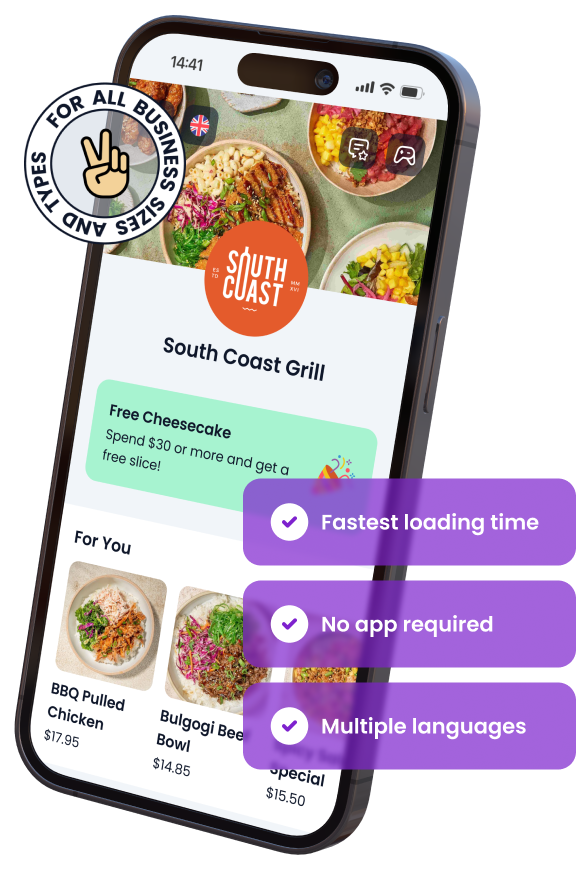
In This Article

Free AI Tools for Restaurants
TRY NOW ➜
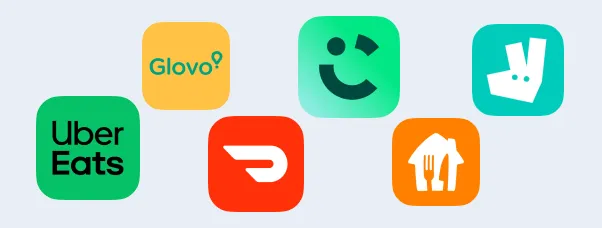
Add your food delivery app links
Make it easy for customers to find your restaurant by adding direct links to popular food delivery apps.


